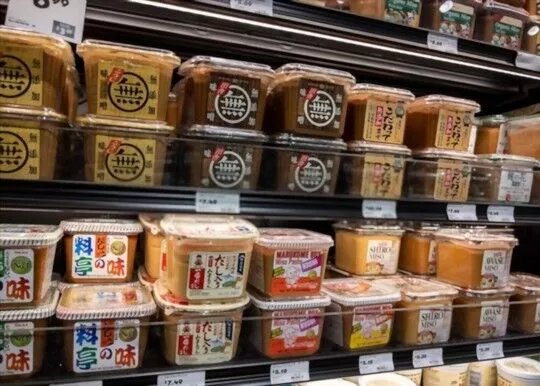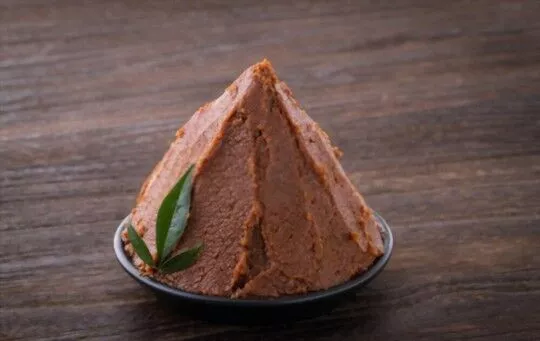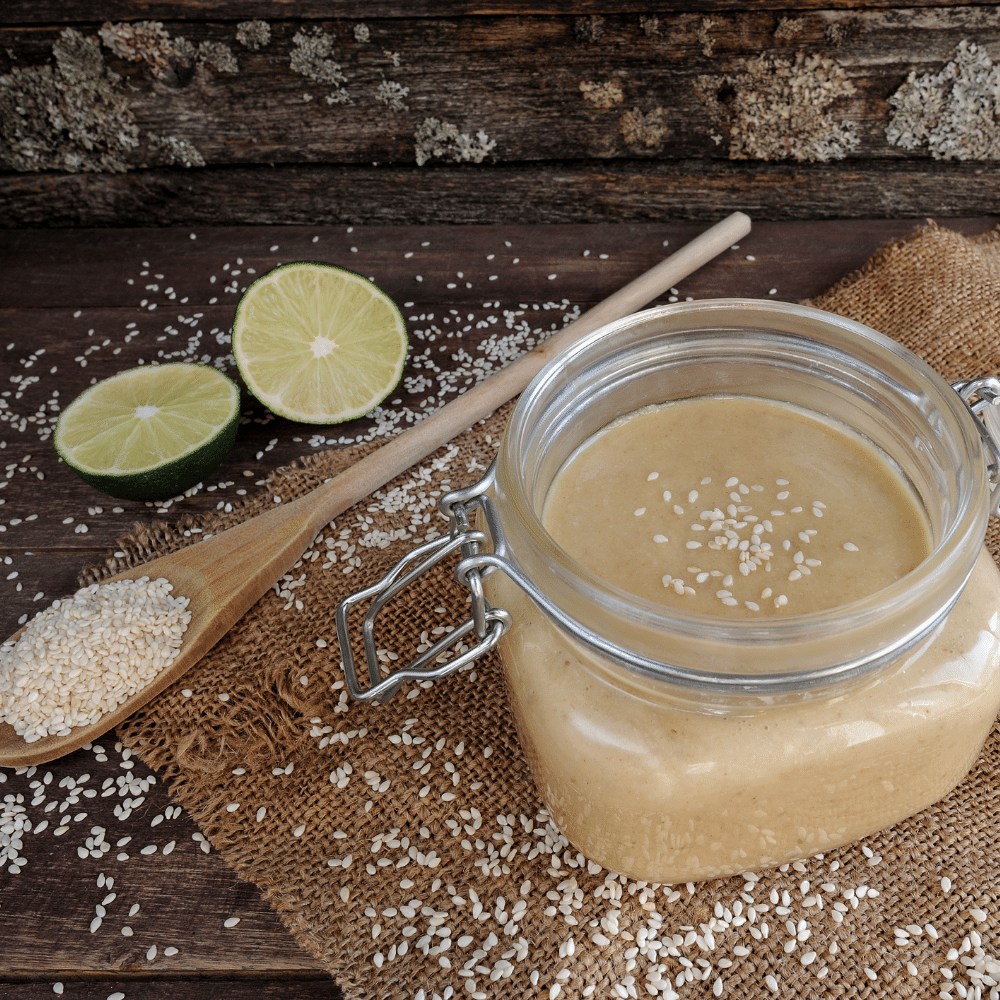Miso paste has become a staple in many kitchens around the world.
It’s a versatile ingredient, used to add flavor and depth to soups, marinades, sauces, and more.
White miso paste is the mildest type of miso paste available and it is often used for delicate recipes such as dressings or dipping sauces.
But what happens if you don’t have white miso paste on hand?
Fortunately, there are several substitutes that can be used in its place.
In this article, I will discuss 8 of the best substitutes for white miso paste so that you can still enjoy your favorite dishes without compromising on taste!
What is White Miso Paste?

White miso paste is a type of fermented soybean paste that is used in Japanese cuisine.
It has a mild, sweet flavor and creamy texture, making it ideal for use in sauces, marinades, dressings, soups, and stews.
White miso paste is made from white rice koji (a type of mold) and soybeans that have been fermented together for several months or even years.
The resulting product has a light yellow color with a slightly sweet taste.
White miso paste can be found in most Asian markets as well as some health food stores.
When using white miso paste, it’s important to remember that the flavor will become more intense the longer it cooks so it should be added towards the end of cooking time if you want to maintain its delicate sweetness.
The 8 Best Substitutes For White Miso Paste
White miso paste is a great way to add flavor to your cooking, but it can be hard to find in some places.
Fortunately, there are plenty of substitutes that will give you the same umami flavor.
Here are eight of the best:
1 – Light Soy Sauce
https://www.pinterest.com/pin/790029959647362412/Light soy sauce is a great alternative to white miso paste, especially when it comes to Cantonese-style stir-fries and dipping sauces.
It has a saltier flavor than dark soy sauce, with a thinner consistency that makes it more refreshing.
Light soy sauce is typically used for dishes like sushi and fried tofu, as well as in marinades or dressings.
The flavor of light soy sauce can be enhanced by adding ingredients such as garlic, ginger, sugar, or sesame oil.
When substituting light soy sauce for white miso paste in recipes, you may need to adjust the amount of salt used accordingly.
Light soy sauce is an essential ingredient in many Asian cuisines and can add depth of flavor to any dish.
2 – Yellow Miso

Yellow miso, also known as shinshu miso, is a type of fermented soybean paste that has a milder flavor than white miso.
It is made by fermenting skinless soybeans with a koji made from barley and sometimes a small amount of rice.
The beans are steamed rather than boiled or braised to preserve the umami flavor.
Yellow miso has an earthy aroma and sweet-salty taste that makes it perfect for adding depth to soups, stews, marinades, and sauces.
It can also be used in place of butter or oil when sautéing vegetables for added flavor.
When substituting yellow miso for white miso paste in recipes, keep in mind that yellow miso has a milder flavor so you may need to adjust the seasoning accordingly.
3 – Red Miso

Red miso paste is a fermented soybean product with a deep, savory flavor.
It is made from a combination of soybeans, salt, and koji (a type of fungus) that has been aged for at least six months.
The longer fermentation process gives red miso its distinctively robust taste and darker color compared to white or yellow miso.
This makes it ideal for adding depth to hearty dishes like soups, braises, marinades, glazes, and sauces.
When substituting red miso paste for white miso paste in recipes, be sure to adjust the amount used as red miso is generally saltier than light yellow or white varieties.
For best results when using red miso paste in cooking applications, add it towards the end of the cooking process so that its unique flavor isn’t lost in the heat.
4 – Tamari

Tamari is a type of Japanese soy sauce that has been fermented for a longer period of time than regular soy sauce.
It is made from the liquid by-product of miso paste, and as such, it has a richer flavor and darker color than regular soy sauce.
Tamari is known for its intense umami flavor with notes of sweetness and saltiness.
It also contains more protein than other types of soy sauces due to its fermentation process.
This condiment can be used in place of white miso paste in many dishes, including soups, marinades, dressings, and stir-fries.
When substituting tamari for white miso paste, you may need to adjust the amount used depending on the dish – tamari tends to be saltier and stronger in flavor compared to white miso paste.
5 – Tahini

Tahini is a creamy, nutty condiment made from ground sesame seeds.
It has a rich flavor that’s slightly sweet and earthy, with hints of bitterness.
Tahini can be used as an alternative to white miso paste in many recipes, such as dressings, sauces, dips and spreads.
It adds depth of flavor to dishes like hummus or baba ghanoush and can also be used to make halva or other desserts.
When substituting tahini for white miso paste, it’s important to remember that tahini is much thicker than miso paste so you may need to adjust the consistency by adding more liquid when cooking.
Tahini is a great way to add complexity and richness to your dishes without overpowering them with saltiness or sweetness.
6 – Dashi

Dashi is a fundamental ingredient in Japanese cuisine, used to create the savory flavor known as umami.
It is made from a combination of kombu (dried kelp), bonito flakes (dried fish flakes), and sometimes dried shiitake mushrooms.
Dashi can be used to make miso soup, clear broth soup, noodle broth soup, and many simmering liquids.
It can also be mixed into the flour base of some grilled foods like okonomiyaki and takoyaki.
The flavor of dashi is subtle yet complex – it has an earthy aroma with hints of sweetness that pairs well with other ingredients.
For those looking for an alternative to white miso paste, dashi makes a great substitute due to its similar umami-rich flavor profile.
7 – Fish Sauce
https://www.pinterest.com/pin/418764465363246563/Fish sauce is a staple condiment in East and Southeast Asian cuisine.
It’s made from fish or krill that have been fermented for up to two years, resulting in a salty liquid with an intense umami flavor.
The sauce has a pungent smell but adds depth and complexity to dishes when used sparingly.
When substituting fish sauce for white miso paste, it’s important to remember that the former is much saltier than the latter.
Therefore, you may need to adjust the amount of other seasonings accordingly.
Fish sauce can be used as a marinade for meats or added into stir-fries, soups, and sauces for an extra layer of flavor.
It also pairs well with lime juice and herbs like cilantro or mint for a zesty dressing on salads or noodles.
8 – Vegetable Stock
https://www.pinterest.com/pin/534521049536059963/Vegetable stock is a great alternative to white miso paste, as it can provide a similar depth of flavor without the added salt.
It is made from vegetables, herbs, and water that are simmered together for an extended period of time.
This allows all the flavors to meld together and create a hearty broth with a rich consistency.
The vegetables used in vegetable stock vary depending on what you have available – carrots, celery, onions, garlic, mushrooms, and bell peppers are all popular choices.
Herbs such as parsley or thyme can also be added for extra flavor.
Vegetable stock is perfect for soups and stews but can also be used in place of white miso paste when making sauces or marinades.
It adds an earthy flavor that complements many dishes while still allowing other ingredients to shine through.
Conclusion
In conclusion, white miso paste is a versatile ingredient that can be used to add flavor and depth to a variety of dishes.
However, if you don’t have white miso paste on hand, there are several other ingredients that can be used as a good substitute.
The best substitutes for white miso paste are light soy sauce, yellow miso, red miso, tamari, tahini, dashi, fish sauce, and vegetable stock. Each of these ingredients has its own unique flavor and can be used to create a delicious dish.
Using a combination of these ingredients is a great way to add flavor and complexity to your dish, and will ensure that you never have to go without white miso paste again.

The 8 Best Substitutes For White Miso Paste
Ingredients
- Light Soy Sauce
- Yellow Miso
- Red Miso
- Tamari
- Tahini
- Dashi
- Fish Sauce
- Vegetable Stock
Instructions
- Pick your favorite substitute from the list above.
- Follow cooking directions for your selected substitute with the proper ratio of ingredients.
Hi, I'm Benjamin. I love cooking, long walks, and my girlfriend! Here you’ll find simple and delicious recipes that you can make in 30 minutes or less.

